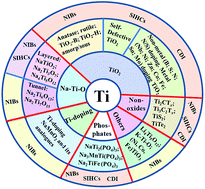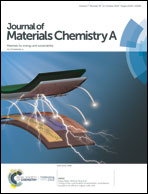Ti-based electrode materials for electrochemical sodium ion storage and removal
Abstract
Owing to the natural abundance and high safety, electrochemical sodium-ion storage and removal devices are considered as promising candidates for large-scale energy storage and water purification systems. When used as the key component of sodium ion batteries (SIBs), sodium ion hybrid capacitors (SIHCs), and capacitive deionization (CDI) devices, the electrode architecture and composition need to be precisely designed to achieve high capacity, rate performance, and long life span. Among various sodium hosting materials, titanium-based electrodes have been intensively investigated owing to their appropriate operating voltage, small strain expansion, fast rate capability, environmental friendliness, safety, and low costs. In this review, we discuss the progress of Ti-based electrode materials over the last two years, covering their classification and key factors (electrical conductivity, ion diffusion, volume variation, capacity and operating voltage) of the electrode design for SIB, SIHC, and CDI applications. The architectural concepts, synthesis methods, and microstructural and compositional control of Ti-based electrodes are also discussed. Our perspectives on current impediments and the future research direction are finally discussed. This review inspires us to propose new chemical strategies that can greatly improve the electrochemical performance.

- This article is part of the themed collection: Recent Review Articles


 Please wait while we load your content...
Please wait while we load your content...